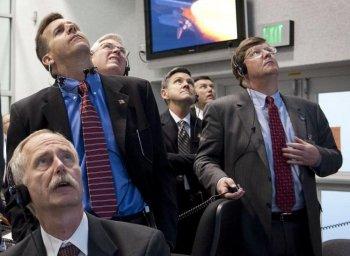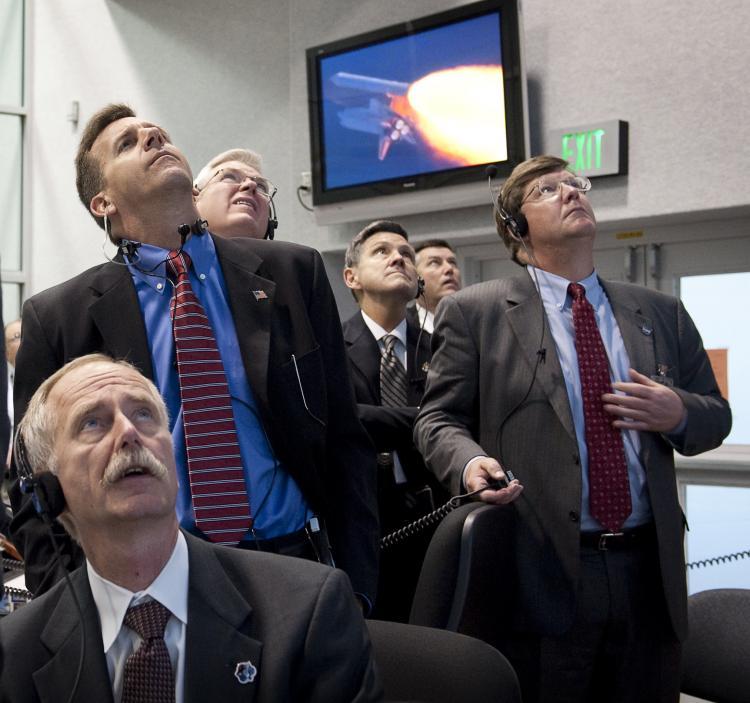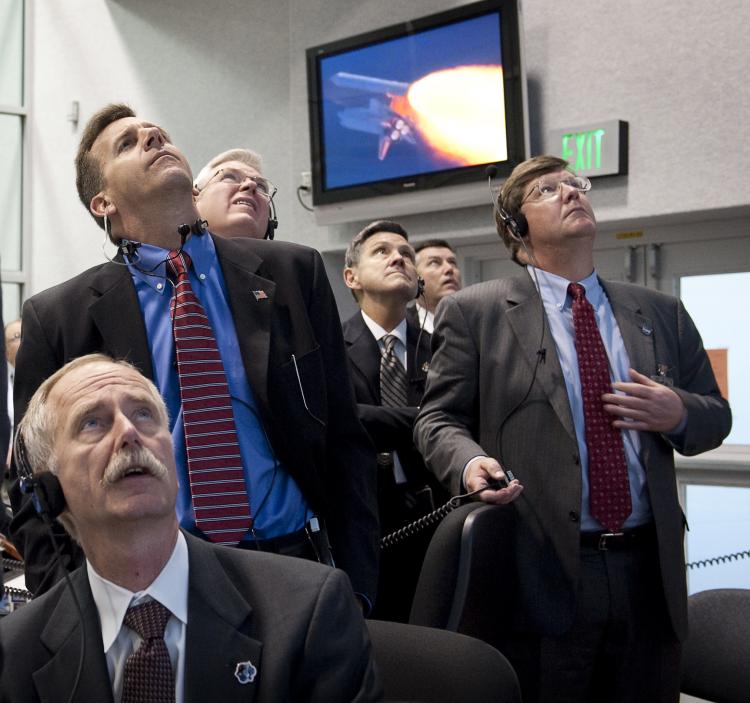With an additional $6 billion in its budget over the next five years, NASA has several projects in the works that aim to boldly go where no man, or probe, has gone before.
Of the new funds, $2 billion is going to NASA’s Science Missions, with a new focus on climate change and earth science. A mission to send a probe into the sun’s atmosphere in 2018 is also included, along with numerous other probe missions.
“This new money can really accelerate the new missions,” said associate administrator of the NASA Science Missions Directorate Dr. Edward Weler during a Feb. 2 teleconference, adding that the money will be used on a group of missions that “make sense.”
“You want to be sure you got it right,” Mr. Weler said. “The worst thing we could do is base things on hope rather than reality.”
There are some cuts, however, including the Constellation program to return humans to the moon by 2020. The program was “over budget and behind schedule” and “was intended to do what we’ve already done,” said Peter Orszag, director of the Office of Management and Budget, during a Feb. 1 White House press conference.
Emphasis will instead be placed on developing new technologies and advance current capabilities.
It was also announced that NASA will begin relying on commercial space flight industries to shuttle astronauts to the international space station—a decision which NASA is still discussing on how to properly implement, but could open new doors in commercial space ventures.
“We’re looking at this as an open area, a new area,” said NASA Associate Administrator for Space Operations Bill Gerstenmaier, during a Feb. 2 teleconference.
He added that astronauts will still be sent to the international space station in an upcoming mission, as previously scheduled, and will conduct various research. Gerstenmaier said the research on the “unique property of space” make way for technologies such as commercial space stations and space hotels.
NASA is providing $50 million to help along the commercial space industry in developing technology to transport astronauts to and from low Earth orbit. Sierra Nevada Corporation will receive the most, at $20 million; Boeing Company will receive $18 million; and other industries will receive between $1.4 and $6.7 million.
“These selections represent a critical step to enable future commercial human spaceflight,” said Doug Cooke, associate administrator for Exploration Systems in a NASA press release.
Things are not all cheery at NASA, however. During a Tuesday teleconference, Cooke said that cutting the Constellation mission to the moon “will bring uncertainty in to workforce.”
Cuts to Constellation also included the cancellation of the Ares 1, Ares 5, and Orion spacecrafts and carrier.
“It is difficult for those of us who worked on those for a number of years,” said Cooke. “Its end will create an angst on workers who were working on it.”
Cooke added that the cuts will also be “mitigated by new opportunities,” including new initiatives and an increased budget for exploration to work with.
“The commercial crew investment will move NASA more toward work in exploration and out of the business of operations to low Earth orbit,” said Mr. Cooke. “So that is an important part of our new work here.”
There is a shift in the exploration approach that will end old technologies and enable new technologies to be developed. Cooke added that in addition to new ventures, NASA will also have technology they have worked on before as a foundation.
“This is an opportunity to develop these capabilities that really help us go beyond places we’ve been in exploration,” said Mr. Cooke. “The funding for many of these areas has always been limited.”
Of the new funds, $2 billion is going to NASA’s Science Missions, with a new focus on climate change and earth science. A mission to send a probe into the sun’s atmosphere in 2018 is also included, along with numerous other probe missions.
“This new money can really accelerate the new missions,” said associate administrator of the NASA Science Missions Directorate Dr. Edward Weler during a Feb. 2 teleconference, adding that the money will be used on a group of missions that “make sense.”
“You want to be sure you got it right,” Mr. Weler said. “The worst thing we could do is base things on hope rather than reality.”
There are some cuts, however, including the Constellation program to return humans to the moon by 2020. The program was “over budget and behind schedule” and “was intended to do what we’ve already done,” said Peter Orszag, director of the Office of Management and Budget, during a Feb. 1 White House press conference.
Emphasis will instead be placed on developing new technologies and advance current capabilities.
It was also announced that NASA will begin relying on commercial space flight industries to shuttle astronauts to the international space station—a decision which NASA is still discussing on how to properly implement, but could open new doors in commercial space ventures.
“We’re looking at this as an open area, a new area,” said NASA Associate Administrator for Space Operations Bill Gerstenmaier, during a Feb. 2 teleconference.
He added that astronauts will still be sent to the international space station in an upcoming mission, as previously scheduled, and will conduct various research. Gerstenmaier said the research on the “unique property of space” make way for technologies such as commercial space stations and space hotels.
NASA is providing $50 million to help along the commercial space industry in developing technology to transport astronauts to and from low Earth orbit. Sierra Nevada Corporation will receive the most, at $20 million; Boeing Company will receive $18 million; and other industries will receive between $1.4 and $6.7 million.
“These selections represent a critical step to enable future commercial human spaceflight,” said Doug Cooke, associate administrator for Exploration Systems in a NASA press release.
Things are not all cheery at NASA, however. During a Tuesday teleconference, Cooke said that cutting the Constellation mission to the moon “will bring uncertainty in to workforce.”
Cuts to Constellation also included the cancellation of the Ares 1, Ares 5, and Orion spacecrafts and carrier.
“It is difficult for those of us who worked on those for a number of years,” said Cooke. “Its end will create an angst on workers who were working on it.”
Cooke added that the cuts will also be “mitigated by new opportunities,” including new initiatives and an increased budget for exploration to work with.
“The commercial crew investment will move NASA more toward work in exploration and out of the business of operations to low Earth orbit,” said Mr. Cooke. “So that is an important part of our new work here.”
There is a shift in the exploration approach that will end old technologies and enable new technologies to be developed. Cooke added that in addition to new ventures, NASA will also have technology they have worked on before as a foundation.
“This is an opportunity to develop these capabilities that really help us go beyond places we’ve been in exploration,” said Mr. Cooke. “The funding for many of these areas has always been limited.”




![[LIVE 4/26 at 10:30AM ET] New Push Started for Global Digital Currencies](/_next/image?url=https%3A%2F%2Fimg.theepochtimes.com%2Fassets%2Fuploads%2F2024%2F04%2F19%2Fid5633115-0426-1080x720.jpg&w=1200&q=75)


